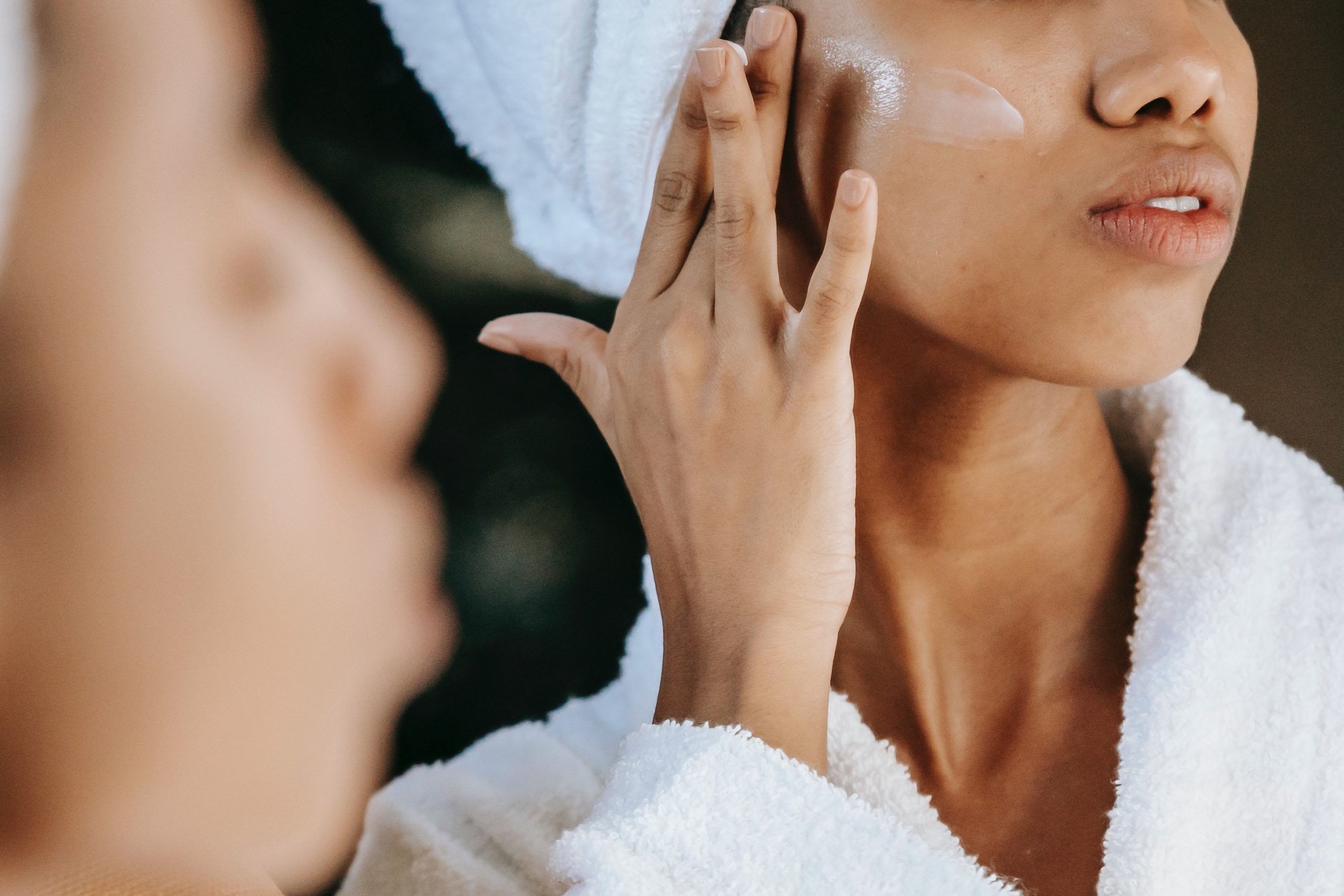Say it with us, a hydrated barrier is a healthy barrier.
When it comes to maintaining healthy skin, you may have heard an earful about defending the skin barrier (and all its layers), which can be kind of confusing considering the fact it’s easy to assume that the skin barrier is just that—skin. But, it’s so much more than that.
Dr. Adam Mamelak MD, FAAD, an Austin-based dermatologist, explains that shielding the skin barrier is extremely crucial, as it is the most important protective barrier on our skin. Once damaged, it can lead to infection, breakouts, and seriously unhealthy looking skin. Yikes.
To up your skin barrier defense pronto, and to learn more about the barrier that protects our largest organ, we tapped Dr. Mamelak (plus other derms!) to break down the best tips and tricks worth keeping in mind as we journey further into winter.
Plus, if you are also on the hunt for product recommendations, not to worry! We definitely got you covered with some soothing and moisture-boosting treats your skin barrier will thank you for.

More on the Skin Barrier
The skin barrier is the outermost layer of the skin and our first layer of defence against harm! It’s main responsibility is to make sure water and electrolytes don’t leave our epidermis.
“Of these layers, the function and performance of the stratum corneum (or uppermost layer of the skin, the skin barrier) is most relevant to its barrier function,” Dr. Mikkilineni says. “Filaggrin is a critical protein found in our stratum corneum that is essential to protect us from the ill effects of the environment; it helps maintain, protect and repair our skin.”
When combined with the other layers of our skin, the skin barrier makes up a huge sensory organ that holds a number of important functions. These include contributing to the body’s immunity, providing defense against bacteria and viruses, and combating environmental threats, says Dr. Mamelak.
Because our skin’s such a huge organ tasked with so many responsibilities, it’s important to understand what each layer does to protect the skin, according to New York-based dermatologist Dr. Radha Mikkilineni, MD.
What Does a Disrupted Skin Barrier Look Like?
Board-certified dermatologist Dr. Anna H. Chacon, MD, FAAD, says maintaining a healthy and intact skin barrier is imperative to maintaining your overall health and to warding off potential insults to our bodies and immune systems.
Although a healthy skin barrier is the goal, sometimes it can become compromised. Once the barrier becomes disrupted, a number of things can happen. “For example, if the skin becomes dehydrated and more permeable, different allergens and microorganisms can penetrate,” she explains. “This can lead to allergic reactions, eczema and infections in the skin and body.” Ouch.
If you’re wondering what a disrupted skin barrier looks like, Dr. Chacon says you’ll want to look out for warning signs such as rashes and skin lesions, which include fissures, eczematous patches and plaques, or symptoms of significant itching or pain.
Though if you aren’t exactly sure how to evaluate the condition of your skin, it’s always best to schedule an appointment with a board-certified dermatologist to be sure!
So, How Do You Protect Your Skin Barrier?
Now that we know what it is and how to identify when it becomes compromised, let’s jump into how to keep the barrier healthy. If you’re wondering how to protect your skin barrier, Dr. Mikkilineni says one of the best things you can do is to keep it moisturized.
However, you’ll want to be cautious of the moisturizer you choose, as she explains that there are two main types of barrier protectants to be aware of, namely, occlusive versus hydrating.
“The former, such as vaseline or ceramides prevent water loss, and are best applied immediately following a shower, while skin is still wet,” Dr. Mikkilineni tells The Klog. “The latter, such as glycerin or water, provide direct hydration but do not prevent water loss. Timing of application is, therefore, critical.”
Aside from providing essential hydration to the skin barrier, there are other measures one can take to ensure your skin barrier is in good shape. These include avoiding the use of abrasive or drying agents, and protecting the skin from environmental effects, she adds.
To do this, be sure to add some pH-balanced and antioxidant packed products to your routine, as well as wearing and reapplying SPF (30 or higher) every single day to protect your skin both in and outdoors.
Look For The Right Moisturizing Skin Care Ingredients
While moisturizing emollients are essential in protecting and restoring the skin barrier, Dr. Mamelak says that there are other moisturizing ingredients to keep on your radar for a healthy barrier, including hyaluronic acid and probiotics/prebiotics.
“Other moisturizing agents, such as those that contain hyaluronic acid, can also draw more moisture into the skin and keep it protected,” he tells The Klog. “Prebiotics and probiotics help promote the growth of healthy skin bacteria, and decrease pathogenic microorganisms from growing on the skin.”
Similarly, Dr. Mikkilineni recommends looking into other repairing ingredients such as aloe, niacinamide, licorice extracts, green tea extract, and ceramides.
